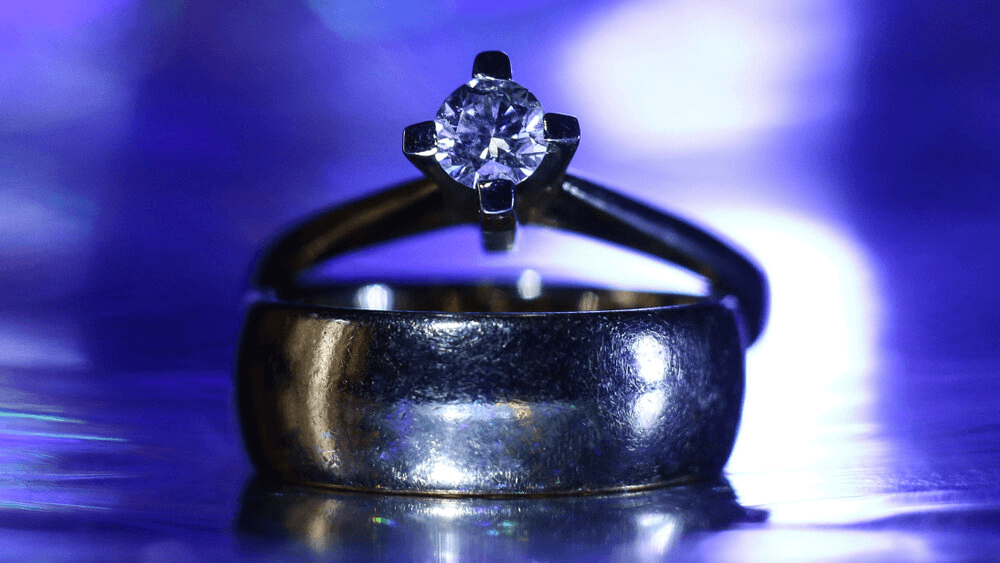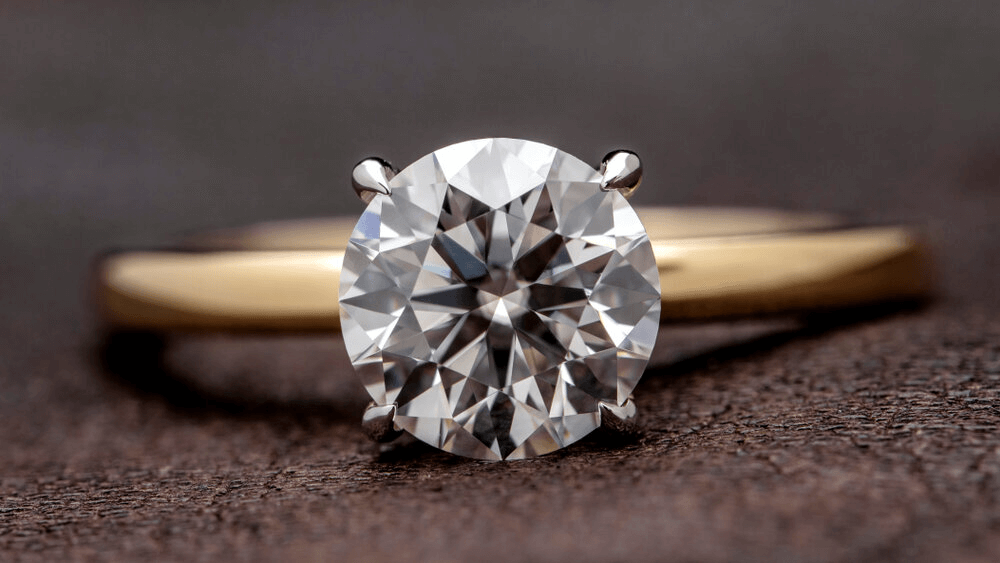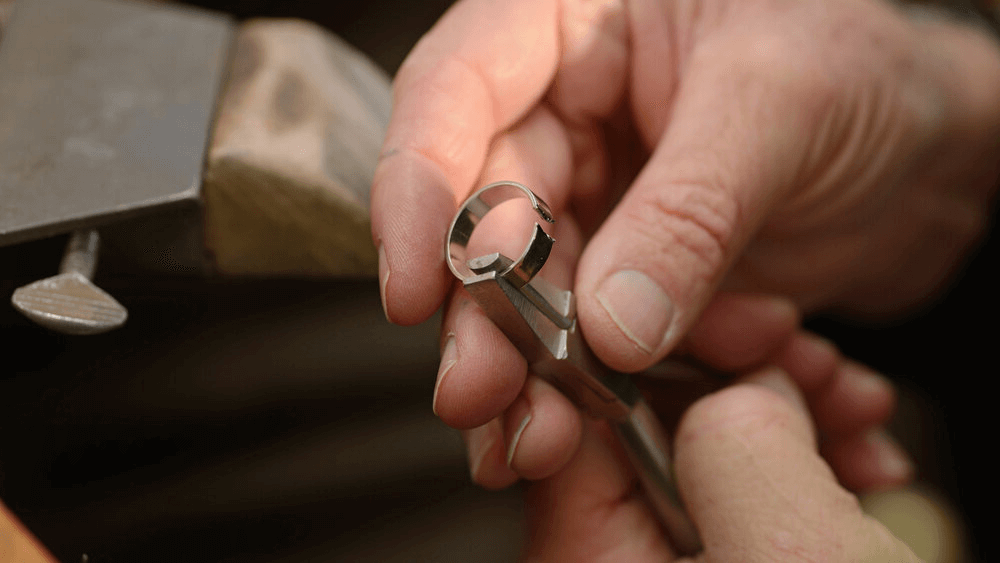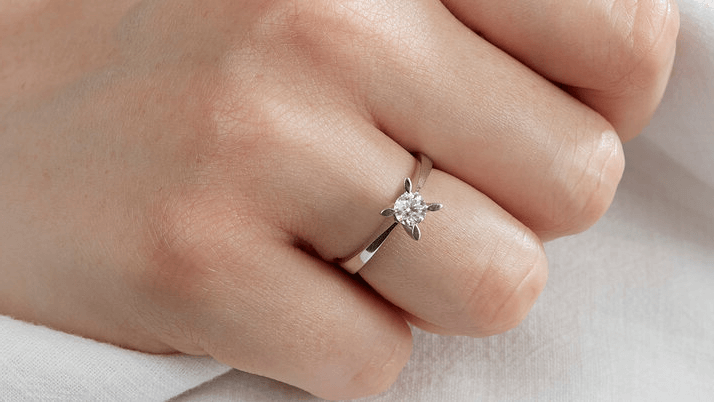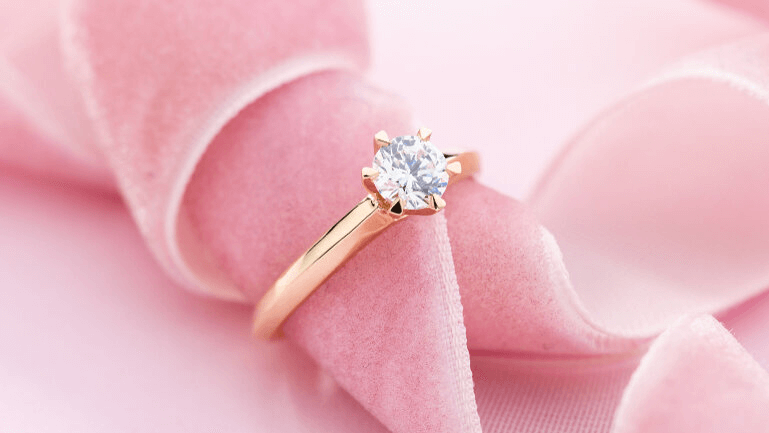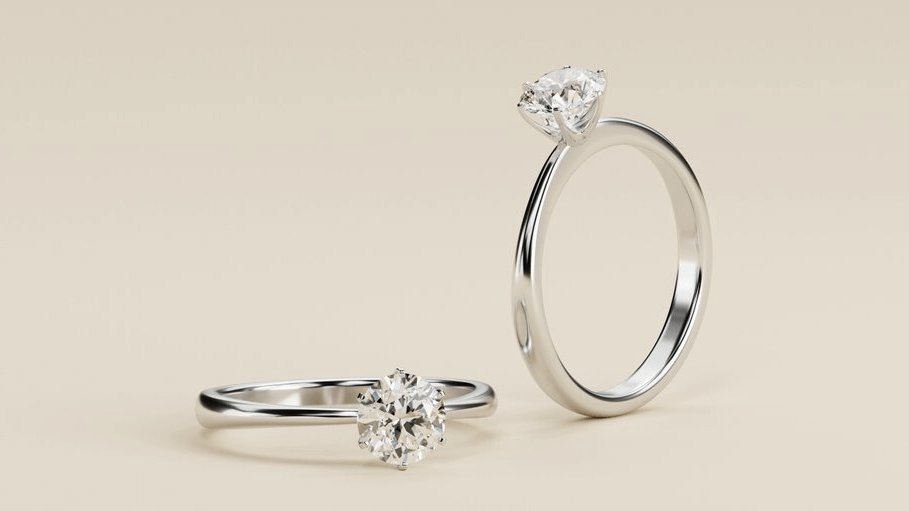White vs Yellow Gold: Do Diamonds Look Better in Either?

By Gary A.

Edited by Olivia H.
Published Mar 12, 2022
Edited on Dec 18, 2024
When it comes to choosing between white and yellow gold, the right option will not only complement your diamond but also reflect your personal style, offering a distinct look and feel for your engagement ring.

- 7 Quick Tips for Choosing Between White or Yellow Gold in Diamond Engagement Rings
- Introduction to Gold Engagement Rings
- Understanding Gold Types
- The Allure of White Gold Engagement Rings
- The Timeless Charm of Yellow Gold Engagement Rings
- Enhancing Diamond Color
- Diamond Brilliance in Different Gold Settings
- Our Expert Take
- 7 FAQs
Before we dive deeper into the specifics, here are some practical tips to help guide your decision-making process:
7 Quick Tips for Choosing Between White or Yellow Gold in Diamond Engagement Rings
- Tip 1:Consider Diamond Color Grade: When selecting gold for your diamond ring, consider the color grade of the diamond. White gold tends to complement higher color grade diamonds by enhancing their brilliance, while yellow gold can beautifully offset lower color grade diamonds, making them appear whiter.
- Tip 2:Analyze Skin Tone Compatibility: Your skin tone can influence how the ring looks on your hand. White gold generally suits cooler skin tones, whereas yellow gold is more flattering on warmer skin tones.
- Tip 3:Assess Long-Term Maintenance: White gold requires more maintenance as it needs regular rhodium plating to maintain its color, while yellow gold is easier to maintain over time.
- Tip 4:Reflect on Personal Style and Trends: Your personal style should be a key factor. Consider current trends, but also think about what aligns with your personal taste and the jewelry you typically wear.
- Tip 5:Evaluate Setting Design: The design of the ring setting can also impact how the diamond looks. Intricate designs may be more pronounced in yellow gold, while sleek, modern designs often pair well with white gold.
- Tip 6:Understand the Impact of Metal Color on Diamond Appearance: Be aware that the color of the metal can cast subtle reflections in the diamond. White gold can enhance the sparkle, while yellow gold can add warmth to the diamond.
- Tip 7:Factor in the Overall Budget: Cost can vary between white and yellow gold. Include the cost of future maintenance for white gold when comparing prices.
Now that you’ve got these practical tips, use Jeweler AI below to find the perfect engagement ring that suits your style and budget:
Introduction to Gold Engagement Rings
One of the great things about white diamonds is that they pretty much look good with anything. Their bright shine and attention-grabbing sparkle make them a clear focal point for any wearer, against any clothing or style, and in any shade of gold.
Nevertheless, making the choice between white and yellow gold isn’t as easy as shrugging peaceably and saying, “They both look good.” It’s a big choice and one that will totally change the look and feel of your ring once it is complete.
Putting as much thought into your diamond as you have, you want to make sure it’s complemented as much as possible by the setting, so which is the right metal for you? Read more below.
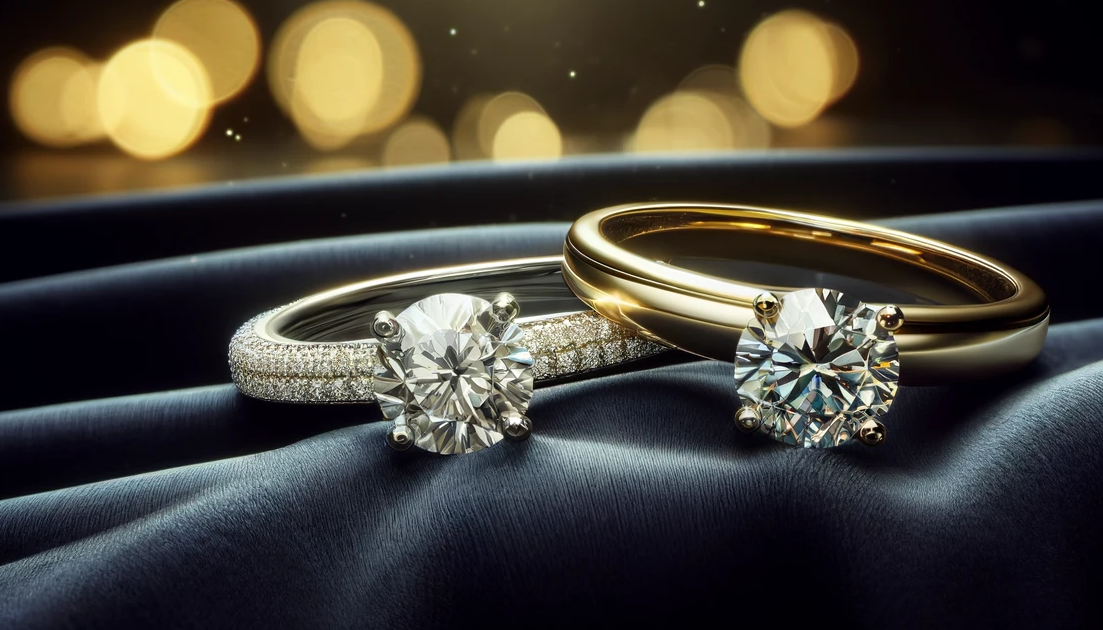
Understanding Gold Types
Gold is naturally yellow. In fact, it’s naturally a lot more yellow than you might realise. 24K gold (pure gold) is very bright and saturated in color, whereas 18k gold, 14k gold, etc get noticeably less vibrant as you go down the scale.
You should never use pure gold for jewelry that is intended to be worn even semi-regularly since it’s too soft to withstand normal wear and tear. Alloys make the gold less pure, but they make it stronger and, in some cases, even more beautiful.
Some alloying metals change the color of gold, and that’s how we get white gold and the ever-trending rose gold. These shades of gold aren’t naturally found, but they are incredibly popular.
The Allure of White Gold Engagement Rings
Impact: Bright, Modern, Celestial, Luxurious.
White gold is a combination of yellow gold, alloying metals like silver, nickel, and palladium – all colors can help to ‘dilute’ gold’s warmth to a near-white color. For that near white to become the stark, bright white you are used to seeing in jewelry, the metal needs to be dipped in rhodium, which forms a thin layer or ‘plate’ over the surface and takes away those yellow undertones the gold content will create.
Some people do prefer the look of white gold before the rhodium plating has been added, but it’s significantly less popular as it can make the jewelry appear a little antiquated.
We’ve written a much more comprehensive guide to white gold already, and it’s worth looking at if you’re considering this metal for your engagement ring.
White gold is often valued for the arresting contrast it creates against the skin but, when used to set a white diamond in place, the opposite holds true.
Like platinum, the silvery sheen of white gold creates a dazzling combination with a white diamond. It appears luminous – more intense than the rest of the wearers’ jewelry collection. Coupled with the brilliance and fire of a beautiful center stone, creates a radiant focal point on the wearer’s finger.
True, from a distance the boundary between metal and diamond is a little less clear than it is between a colored gold (yellow or rose) and a white diamond, but whether you see this as a positive or a negative comes down to personal preference.
White gold creates an elegant and understated setting for a diamond and a bold impression against any skin tone.
The Timeless Charm of Yellow Gold Engagement Rings
Impact: Classic, Warm, Romantic, Opulent.
The intensity of yellow gold’s color totally depends on karat type, since a lower karat will yield a much paler hue, while a higher karat type will yield a bolder, stronger yellow that stands out more against the skin – and a diamond.
Whichever karat type you choose, however, the effect will follow the same lines: a beautiful and compelling contrast of warmth and cold (the icy brightness of the diamond), and a timelessly opulent impression.
While white gold blends with the diamond, yellow gold has the opposite effect, maintaining that distinction between stone and metal, and allowing the elegant shapes of the setting to stand out without detracting from the diamond. Each prong, bead, and thread of gold stands out as a feature, but a skilled jeweler will ensure that these features remain secondary – architectural, yet decorative.
The contrast emphasizes the brightness, brilliance, and fire of the diamond, and makes it appear all the more luminous as a result.
Enhancing Diamond Color
One of the more practical benefits brought by yellow gold is its ability to ‘mask’ a small amount of color in a diamond. Since the setting will feature significantly more warmth and color, a diamond of, say, an I or J color will appear brighter as a result of this contrast. It’s not a miracle-worker and won’t make an L color diamond look like a D color diamond, but it’s handy to know.
Then again, while diamonds that have been graded at the lower end of the Near Colorless range tend to be complemented by yellow gold, the opposite holds true for diamonds that are practically colorless. If you invest in a diamond with a D, E, F, or even G color, you may find it is wasted against a yellow gold setting, particularly if the shape is prone to holding onto color.
White gold is similarly tricky. Any slight trace of visible color in your diamond is likely to be more noticeable in white gold than it would be against yellow gold, because of the contrast created between the two. Spending slightly more on a diamond with a higher color grade (around a G or H) will be the best solution, particularly if the diamond shape you have chosen is known for retaining color – for instance, the Cushion cut.
Diamond Brilliance in Different Gold Settings
Just as the moon stands out better against a dark sky, so does a white diamond against a colorful setting. Sure, no one is going to overlook your diamond just because it’s in a white gold or platinum setting, but there is something particularly striking about the contrast of warm gold and stark white.
The main advantage to a white gold setting is the fact that it looks good with any color. If any of the accents in your ring’s design are fancy colored diamonds or gemstones, it’s a given that white gold will offer the ideal neutral frame for them – no clashing or awkward color combinations.
The clean, crisp beauty of white gold and platinum engagement rings is pretty much timeless. Some of the most influential engagement rings of all time – rings belonging to Elizabeth Taylor, Princess Grace of Monaco, and Beyonce, as well as signature pieces from brands as notable as Cartier and Tiffany & Co. – are defined by the timeless combination of bright, colorless metal and white diamond.
Yellow isn’t the most versatile color, although the natural beauty of yellow gold makes it more versatile than, say, a primary yellow. Besides, jewelers have combined the metal with every color of diamond and gemstone under the sun over the years, with dazzling results.
Our Expert Take
The question of white gold vs yellow gold is not easy to answer. Both metals have been used time and time again to create some truly beautiful designs, and there will never be a definitive ranking for the two.
One of the easiest solutions is to look in your partner’s jewelry box and see what they gravitate toward. A lot of people have a preference for one or the other.
Alternatively, consider a mixed metal engagement ring. Modern, bold, and a great way of incorporating the benefits both metals offer for diamonds into a single, unique piece.
7 FAQs
- Q: Does white or yellow gold enhance diamond brilliance more?
- A: White gold can enhance the brilliance of higher-grade color diamonds, while yellow gold pairs well with lower color grades, often making them appear whiter.
- Q: Which gold is better for maintenance, white or yellow?
- A: Yellow gold requires less maintenance compared to white gold, which needs regular rhodium plating.
- Q: Can skin tone affect the choice between white and yellow gold?
- A: Yes, skin tone plays a role. White gold is generally more flattering on cooler skin tones, whereas yellow gold suits warmer skin tones better.
- Q: Does the gold color affect the ring’s design?
- A: Absolutely. Yellow gold can highlight intricate designs, while white gold complements sleek, modern styles.
- Q: How does the metal color impact the appearance of the diamond?
- A: The metal color can subtly influence the diamond’s appearance. White gold enhances sparkle, and yellow gold can add warmth.
- Q: Is there a cost difference between white and yellow gold?
- A: Yes, there can be. White gold may be more expensive in the long run due to maintenance costs.
- Q: Which gold type should I choose for my engagement ring?
- A: The choice depends on personal style, skin tone, maintenance preference, and budget. Both have unique qualities that can enhance the beauty of a diamond ring.
FOLLOW-UP GUIDE SERIES

